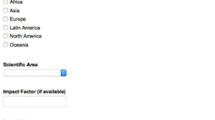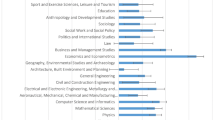Abstract
The impact factor is one of the most used scientometric indicators. Its proper and improper uses have been discussed extensively before. It has been criticized extensively, yet it is still here. In this paper I propose the journal report card, which is a set of measures, each with an easily comprehensible meaning that provides a fuller picture of the journals’ standing. The set of measures in the report card include the impact factor, the h-index, number of citations at different points on the ranked list of citations, extent of uncitedness and coverage of the h-core. The report card is computed for two sets of journals, the top-20 journals in JCR 2010 and the top-20 journals in JCR 2010 for the category Information and Library Science.






Similar content being viewed by others
References
Australian Research Council (no date). Ranked outlets. Retrieved from http://www.arc.gov.au/era/era_2010/archive/era_journal_list.htm.
Bar-Ilan, J. (2010). Rankings of information and library science journals by JIF and by h-type indices. Journal of Informetrics, 4, 141–147.
Bergstrom, C. (2007). Eigenfactor—Measuring the value and prestige of scholarly journals. College and Research Libraries News, 68(5), 314–316.
Bollen, J., Rodriguez, M. A., & Van de Sompel, H. (2006). Journal status. Scientometrics, 69(3), 669–687.
Braun, T., Glänzel, W., & Schubert, A. (2006). A Hirsch-type index for journals. Scientometrics, 69(1), 169–173.
Brin, S., & Page, L. (1996). The anatomy of a large-scale hypertextual Web search engine. Computer Networks and ISDN Systems, 30(1–7), 107–117.
Centre for Science and Technology Studies (2011). Methodology. Retrieved from http://www.leidenranking.com/methodology.aspx.
Egghe, L. (2006). The theory and practice of the g-index. Scientometrics, 69(1), 131–152.
ESF (2012). ERIH foreword. Retrieved from http://www.esf.org/research-areas/humanities/erih-european-reference-index-for-the-humanities/erih-foreword.html.
eigenfactor.org (no date). Eigenfactor score and article influence score: Detailed methods. Retrieved from http://www.eigenfactor.org/methods.pdf.
González-Pereira, B., Guerrero-Bote, V. P., & Moya-Anegón, F. (2009). The SJR indicator: A new indicator of journals’ scientific prestige. Retrieved from http://arxiv.org/ftp/arxiv/papers/0912/0912.4141.pdf.
Harzing, A. W. K., & van der Wal, R. (2009). A Google Scholar h-index for journals: An alternative metric to measure journal impact in economics & business? Journal of the American Society for Information Science and Technology, 60(1), 41–46.
Ingwersen, P., Larsen, B., & Wormell, I. (2000). Applying diachronic citation analysis to research program evaluation. In B. Cronin & H. Barsky Atkins (Eds.), The web of knowledge. A Festschrift in honor of Eugene Garfield (pp. 373–387). Medford: Information Today.
Moed, H. F. (2010). Measuring contextual citation impact of scientific journals. Journal of Informetrics, 4(3), 265–277.
Moed, H. F., & van Leeuwen, T. N. (1995). Improving the accuracy of institute for scientific information’s journal impact factors. Journal of the American Society for Information Science, 46(6), 461–467.
Moed, H. F., & van Leeuwen, T. N. (1996). Impact factors can mislead. Nature, 381(6579), 186.
Pinski, G., & Narin, F. (1976). Citation influence for journal aggregates of scientific publications: Theory, with application to the literature of physics. Information Processing and Management, 12, 297–312.
Vanclay, J. K. (2012). Impact factor: outdated artefact or stepping-stone to journal certification? Scientometrics. doi:10.1007/s11192-011-0561-0.
Zitt, M. (2010). Citing-side normalization of journal impact: A robust variant of the Audience Factor. Journal of Informetrics, 4(3), 392–406.
Zitt, M., & Small, H. (2008). Modifying the journal impact factor by fractional citation weighting: The audience factor. Journal of the American Society for Information Science and Technology, 59(11), 1856–1860.
Author information
Authors and Affiliations
Corresponding author
Rights and permissions
About this article
Cite this article
Bar-Ilan, J. Journal report card. Scientometrics 92, 249–260 (2012). https://doi.org/10.1007/s11192-012-0671-3
Received:
Published:
Issue Date:
DOI: https://doi.org/10.1007/s11192-012-0671-3




